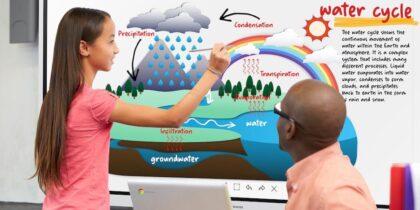How to Integrate SEL into the Digital Classroom: Strategies for Social-Emotional Learning Online
Introduction: Why SEL matters in Online Learning
As digital learning becomes an integral part of education,integrating Social-Emotional Learning (SEL) into the online classroom is more significant then ever. SEL equips students with the emotional intelligence, empathy, and resilience needed to thrive academically and personally. Yet, virtual environments pose unique challenges when fostering these crucial skills. So, how can educators weave SEL strategies seamlessly into their digital instruction? In this article, we’ll explore the best practices, tools, and actionable tips for teaching SEL online, ensuring every virtual classroom becomes a hub for holistic growth.
What is Social-Emotional Learning (SEL)?
Social-Emotional Learning (SEL) is the process through wich individuals learn to understand and manage emotions, build healthy relationships, empathize with others, set positive goals, and make responsible decisions. The key CASEL five core competencies are:
- Self-awareness – Recognizing emotions, values, and strengths
- Self-management – Regulating emotions and behaviors in different situations
- Social awareness – Showing empathy and understanding for others
- Relationship skills – Establishing healthy and rewarding connections
- Responsible decision-making – Making thoughtful and constructive choices
SEL is not just crucial in physical classrooms; it lays the groundwork for successful online learning by promoting community, engagement, and well-being.
Benefits of Integrating SEL in the Digital Classroom
- Improved Engagement: SEL helps cultivate a sense of belonging, which increases participation in virtual settings.
- Academic Success: Emotionally intelligent students are better equipped to handle academic challenges and collaborate in group projects.
- Better Mental Health: SEL practices reduce feelings of isolation often experienced in online learning.
- Positive Learning Environment: Fosters respect, empathy, and open communication, making digital classrooms safer and more welcoming.
Challenges of Teaching SEL Online
- Reduced Face-to-Face Interactions: Difficulties in reading body language and emotional cues through a screen.
- Student Disengagement: Easy for students to become passive or feel disconnected without intentional SEL integration.
- Equity and Access: Not all students have equal access to technology or a supportive home environment.
Awareness of these challenges helps educators proactively design strategies that are inclusive and effective in a remote setting.
Key Strategies for Integrating SEL in the Digital Classroom
1. Start with Daily Check-Ins
- Begin every session with a quick emotional check-in.
- Use online polls, emojis, or simple chat prompts: “How are you feeling today?”
- Encourage students to share, but make participation optional to establish a safe environment.
2.Foster Safe and Supportive Online Communities
- Establish clear, inclusive community guidelines for virtual behaviour and respect.
- Create small group activities where every voice can be heard.
- Showcase student achievements and positive behaviors in class forums or newsletters.
3. Embed SEL into Academic Content
- Incorporate stories or scenarios that encourage viewpoint-taking and empathy.
- Connect academic assignments to real-life challenges, encouraging problem-solving and responsible decision-making.
- Leverage project-based learning that fosters collaboration and relationship-building.
4. Use Digital Tools for SEL Activities
- Platforms like flipgrid or Padlet allow multimedia sharing,reflective storytelling,and peer feedback.
- mindfulness and meditation apps (e.g., Headspace, Calm) can be integrated for virtual “brain breaks.”
- Utilize interactive whiteboards for collaborative exercises, gratitude journaling, or emotional mapping.
5. Model and teach Digital Citizenship
- Embed SEL into conversations about online safety, empathy, and respectful communication.
- Encourage thoughtful online interactions and guide students on how to navigate conflict in digital spaces.
6. Provide Opportunities for Reflection
- Assign regular journaling or discussion board posts about emotions, challenges, and successes.
- Host virtual “circle time” sessions for students to discuss feelings and experiences.
Practical Tips for Effective Online SEL Implementation
- Consistency is Key: Make SEL activities a regular part of your lesson plans, not just an “add-on.”
- Use Visual and interactive Elements: Bite-sized videos, infographics, and interactive games keep students engaged.
- Encourage Peer Connections: pair students for peer mentoring or “SEL buddies” to foster deeper relationships.
- Solicit Student Feedback: Regularly check what’s working and where students need extra support.
- Promote Family Involvement: Share SEL practices and resources with families to extend learning beyond the digital classroom.
Real-World Exmaple: SEL Success in Action
“When our school shifted online,we faced disengagement and isolation.By incorporating weekly check-ins, mindfulness breaks, and collaborative projects, student participation soared. One of our quietest students even lead a digital kindness campaign.SEL transformed our virtual classroom into a connected, motivated learning community.”
– Ms. Thompson, Middle School Educator
Top Tools & resources for Online Social-Emotional Learning
- Nearpod SEL Lessons: Interactive lessons aligned with CASEL competencies (Nearpod SEL Libary)
- Common Sense Education: Free curriculums and toolkits for teaching digital citizenship and SEL (Common Sense Education)
- Emotion Wheel or Mood Meter: Visual tools to help students identify and discuss feelings
- Mindfulness and Meditation Apps: Calm classroom, Mind Yeti, Smiling Mind
Conclusion: Building Connected Digital Classrooms Through SEL
The digital classroom, while full of potential, can often feel impersonal and isolating for both students and teachers. By integrating SEL into online learning,educators can foster emotional intelligence,community,and resilience—preparing students for academic success and life beyond the screen. Start small, experiment with new strategies, and remember: At heart, every digital learning experience is an opportunity to support, inspire, and empower.Your efforts to make social-emotional learning a priority will echo far beyond the virtual classroom.
Empower your students today—embrace SEL online for a brighter, more connected tomorrow.

